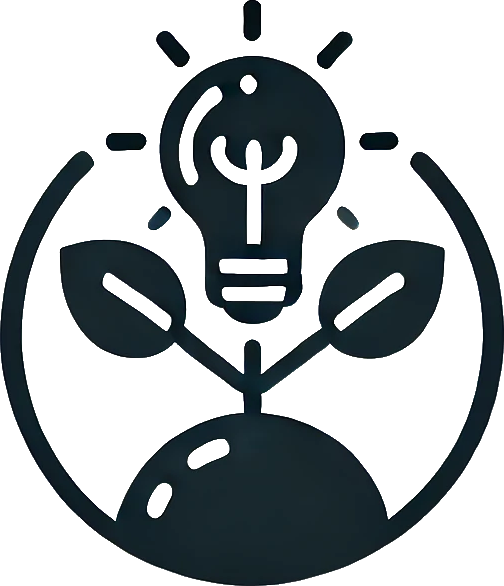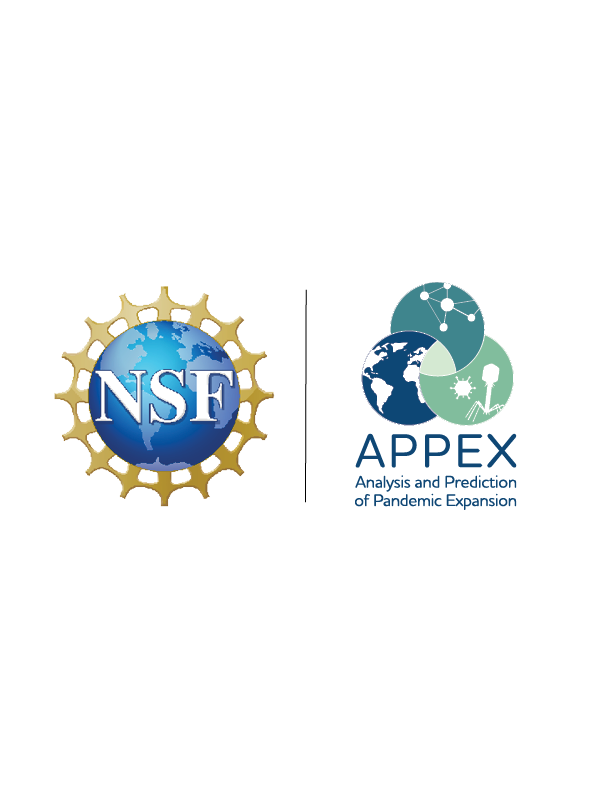
NSF APPEX serves as a hub for multidisciplinary research to address the complexities of pandemic risk and response. We focus on the “what”, “how”, and “why” of expansion of disease outbreaks from local, isolated cases of infection into truly global threats.
Our mission includes gathering and supporting new multidisciplinary science Working Groups that are innovating solutions in pandemic science over a natural lifetime of the project (from birth of a new group to sunsetting a group that has achieved everything it can).
We are excited to announce our first semi-annual competition for new Seed Ideas for Working Groups - hearing from you what new and exciting thing APPEX should be working on next and recruiting new participants to form Working Groups around these seed ideas. This can be something you want to do yourself with our help or an idea you’ve always thought “someone should do”, even if you don’t want that someone to be you.
If you have an exciting idea for how to study pandemic expansion, we want to work with you!
In this call, you will find details on:
We are excited to issue this first call and can’t wait to see what you propose!
Who can propose a Seed Idea?
Anyone interested in serious Pandemic Science can propose a Seed Idea. Proposers could be students, professors, members of the general public, employees at government agencies or labs, policy makers, researchers at other Pandemic Science-focused Centers (such as Phase 2 Prediction in Pandemic Preparedness (PIPP) Centers and CDC Outbreak Analytics and Disease Modeling Network (OADMN) centers), and can be based within the US or anywhere in the world.
What is the Process for Proposing a Seed Idea?
APPEX uses the Give and Take Matrix to process Seed Ideas through a multidisciplinary framework. “Give” refers to an idea or a skill set one can give to a particular pandemic related problem; “Take” refers to what one needs (a discipline or resource) to address a particular pandemic related problem. Mismatches in the matrix of givers and takers suggests a gap in collective understanding and therefore indicates fertile opportunities for collaborative discovery. (To learn more about a generic Give and Take Matrix, you can CLICK HERE, but note that our process is about ideas rather than team roles)
Give and Take in Practice for APPEX Seed Idea Proposals: The person proposing the Seed Idea is the one who “Takes” by writing down a list of disciplines or discipline-based contributions they think are needed to tackle the question. (Proposers can have a person already in mind to contribute this to the team, or can just explain what disciplinary contributions they need, and why they think they need them, and APPEX can help find people interested in filling those roles.) Folks who “Give” are then all the other people who read the initially proposed idea and think “Ooh, you know what else would help address this question? If you also had someone to do this thing”. That can be someone who does that thing, or just someone who recognizes how including that perspective, expertise, skillset, or dataset could really help make the work better.
How it works and how to participate:
Step #1 - To Give an idea please follow this link where you will be invited to:
Step #2 -
Step #3 -
Step #4 -
Step #5 -
(Ongoing Evaluation and Group Life Cycle) -
Resources for Selected Working Groups
Here are some of the resources we provide to our working groups. In addition, each group will be different and we look forward to group requests for individualized support to enable progress and success. To this end, we have some (very modest) funds set aside to address such requests. We will work with each team to try to provide what they need!
Policy and translation training, guidance, and support
Post-Doctoral Support (forthcoming as we hire people into these positions)
Technical Support
Team Consilience Support
Other support
Responsibilities of Selected Working Group Members
All selected Working Groups will receive funds to meet (at least) once per year in-person at APPEX in Knoxville, TN and team members are expected to try their best to attend this annual meeting.
The Working Group team leader agrees to
The Working Group team members agree to
Every 6 months the team will be invited to consider its progress and satisfaction, potential role changes and needs, and identify barriers and opportunities that impact the team's success. APPEX leadership will work with the team to support appropriate steps made evident in the 6th month check in. (There will also be an optional 3 month self-assessment as well.)
Are there Existing Working Groups I can Look to for Inspiration?
This is our first call for new Working Groups, so we don’t have examples for you just yet BUT we do have two related things that might help.
Our Phase 1 PIPP Institute: PREEMPT piloted our Give Take Protocol to form its teams. Here are two examples of teams from that earlier work:
Example 1: Project on Zoonotic Pathogens
Are there any combinations of (categories of) features of city landscapes (broadly defined across fields/ descriptors) so overpowering that no additional factors really have any influence on pathogen (re)emergence risks?
Zoonotic pathogens can threaten human well-being, especially in densely populated areas where humans and wildlife frequently come into contact. Observations of concordant global trends of greater pathogen prevalence and disease incidence with urbanization have generated concerns that the risk of pathogen transmission- and thus the likelihood for disease outbreaks- is increasing in part because cities are becoming larger and more populous worldwide. Yet the nature of pathogen transmission risk in urban and urbanizing landscapes remains unclear. Evidence of heterogeneous distributions of pathogens and hosts suggests that associated transmission risk is highly variable within cities. Thus the potential risk of pathogen spillover may also be heterogeneously distributed, with hotspots of outbreak risk localized across urban landscapes. Incidences of outbreaks and spread would constitute conditions where complex, socioecological tipping points have been surpassed. Concordant, geographically explicit comparisons of host and pathogen assemblages (i.e., meta-communities) could elevate understanding of outbreak risk, as pathogen pool diversity and human activities are key factors in predicting pathogen transmission. Combining field surveys with modeling to reveal the scale of host-pathogen-human associations also would help better define transmission risk and shed light on whether proactive measures (e.g., control of host populations, landscape management) can be taken to reduce spillover, and thus provide practical guidance for improving pathogen surveillance programs.
Example 2: Project on Disease Network Predictability
Can we identify variable tipping points in disease spread intervention strategies conditional on the type, style, and extent of intervention in realistic networks with realistic behavioral feedback and pathogenic evolution?
We want to develop a model for the risk-space associated with these three thresholds. The idea is to build an epidemic simulation over complex realistic networks where we vary (a) the connectivity of the network, (b) the bug evolves on two dimensions: transmissibility and lethality, with the evolution being governed by selective pressures in the network.
The core question is to establish which sorts of control features push back the tipping point from some core baseline
Not only are we proud of those projects, if you look at the initial descriptions of what we planned to do and then compare that to each of the products listed on those team pages, you’ll get a sense of how the working group dynamic went from “seed idea to bring us together” to “oh, but now that we’re all in the room with a common goal, it changed how we are thinking and we should do this related other thing first!”. That’s what we’re expecting to happen with our APPEX Working Groups too.
The NSF APPEX Center, in addition to forming new Working Groups around proposed Seed Ideas, has about 20 Core Research Project Teams that have formed with specific goals around some of our existing focal research themes that came out of the experiences we had during our Phase 1 Institute. APPEX is just getting started and so are these Core Project Teams, but you can check out some brief initial descriptions of what we’re doing in these teams here!
